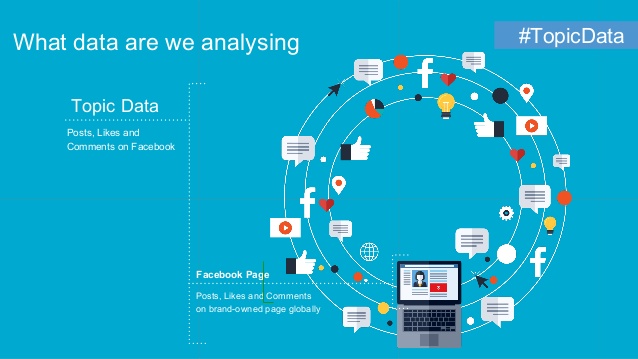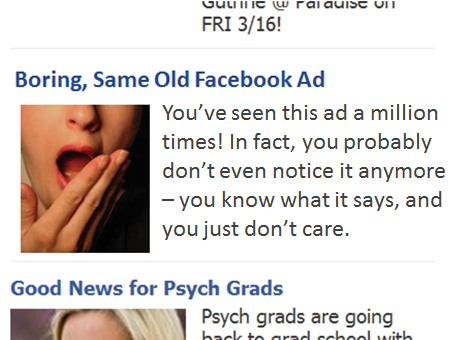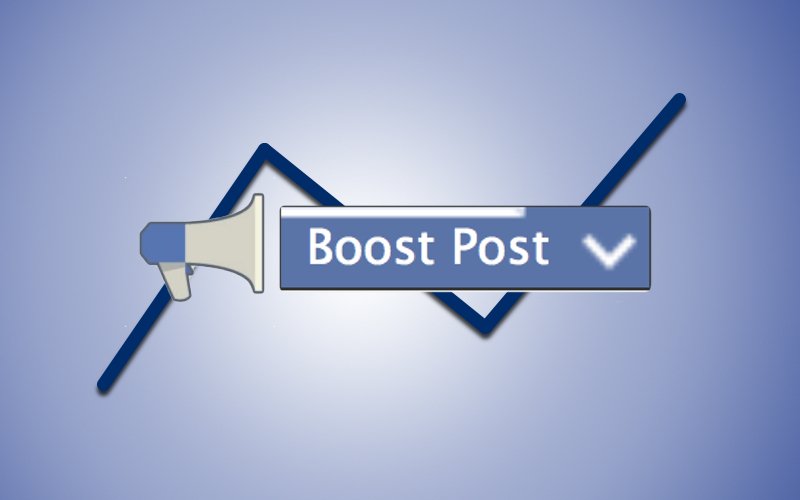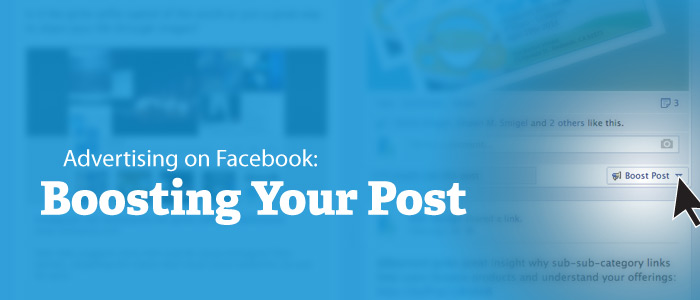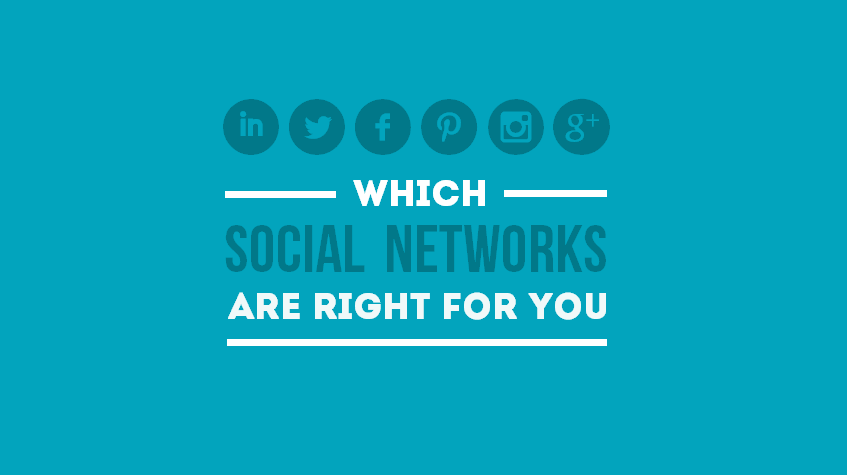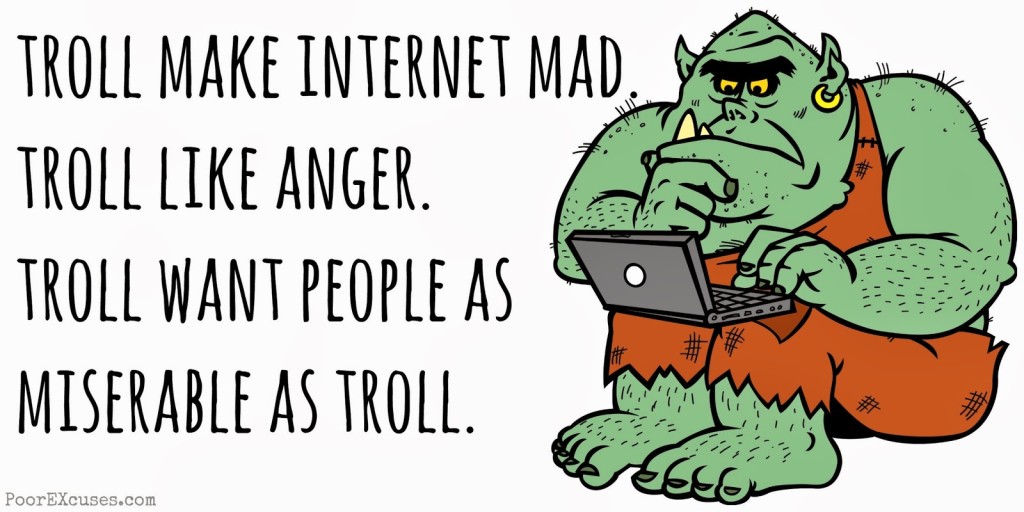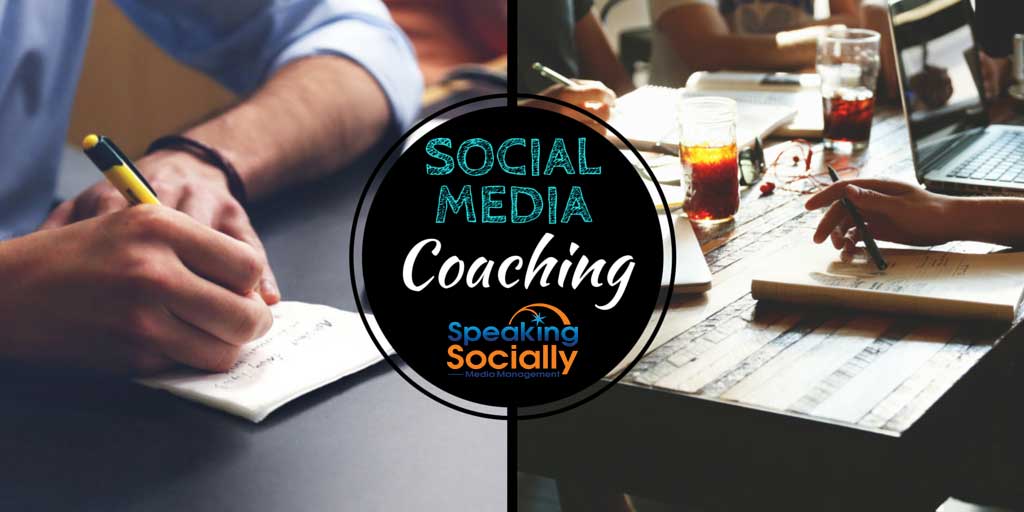Want to know what Facebook has on you? Download the data. Just go to the Settings section of Facebook (the arrow next to the question mark, top right) and click on “download my data” at the bottom of the page called “General Account Settings.” Then you’ll make your request and await Facebook’s compiling of your data, which is delivered via an email link. If you’ve been on Facebook for many years, expect the link to take a while.
There’s a nice honeymoon period of social media advertising where the clicks are many and the costs are low. But every campaign is bound to fatigue, and in this blog, we’ll explain how you can rise above the adversity.
When fatigue sets in, costs rise
The more users see your social ads, the less effective they become. Even if they do click them, you’ll have to pay more in the end. A tell-tale sign of social media advertising fatigue is a sharp rise in the cost-per-click metric.
Change your creative once a month
There’s no real way to avoid social media advertising fatigue altogether. If you run ads, users will eventually see them more than once before you change your creative.
The real question is how often you should change your creative to keep the fatigue to a minimum. This Marketing Land article suggests sticking to a one month schedule:
“So how often should creative be changed? The marketing analytics department at Merkle carried out some analysis on ad fatigue for one of our large clients. The graph below shows the performance of each creative over time, compared to its respective performance in its first week of running. They found that after 35 days, CPC (cost per click) began to be seriously negatively impacted by ad fatigue.”
Changing your creative quicker than this will likely be too expensive. Waiting any longer will make your campaign more susceptible to fatigue.
Change the format
In addition to changing your creative, you can also change the format of the ad. Platforms like Facebook give you multiple options in this regard so you’ll never really run out of ideas.
Changing a few elements of your ads can help you squeeze a little more value out of your creative. This should help you save money in the long-run since you won’t need to create as much new creative.
To talk more about social media advertising, or anything else, contact us today.
There’s nothing that sends a spike of oxytocin through your bloodstream like getting likes on your latest social media post. And if your goal is to go viral (and really, who doesn’t have that goal?), then there’s no such thing as too many likes and shares. However, if you’re really concerned about your post’s reach, then it’s important for you to get the right kind of likes and shares, too.
Not All Likes Are Created Equal
So, your latest post got 100 likes in the first day! You also got 50 shares! While those numbers sound impressive, it’s important to stop, and examine where those likes and shares are coming from. Because not all likes are created equal.
Let’s say you wrote a new horror novel, and you were posting about it. You want to get the message to as many people as possible that your content is out there, and they should check it out. The problem is that of those 100 likes, 75 of them are from friends or family members. People who want to support you, but who aren’t really part of the niche you’re aiming for. And 40 of your shares are also from personal acquaintances who just want to do their part to help spread the word.
Now, that isn’t bad by any stretch of the imagination. However, if your friends and family don’t have people on their lists who are horror fans, then your message can be falling on deaf ears. Your post is getting seen, but it isn’t being interacted with.
What about the rest of the numbers? Well, the other 25 likes and 10 shares on your post came from book critics, other writers, and reviewers; people who have audiences of their own who are actively interested in the sort of content you’re promoting. While only a small fraction of the total numbers you achieved, those likes and shares are worth more in terms of reach, because they’re introducing your post to just the right audience. People who will see your post, click-through, and who are more likely to tell their friends about this great new horror novel they just found out about.
So, there’s no such thing as bad likes… but while some of them might have the impact of spitballs, others can go off like a grenade.
For more information on spreading your message through social media, simply contact us today!
If a tree falls in the forest with no one around, does it make a sound? If you pay for a large Facebook Boost with no specific demographic targeted, do you expect a big return?
You might get one, but it will be small.
Not everyone that will see your ad will have a problem that you can solve. In fact, people ignore ads that have no relevance to them.
To be clear here, you do want to draw more customers to your posts in order to convert them to customers, right?
Great! Let’s discuss 3 Compelling Reasons to Pay Small amounts for targeted Facebook boosts to Return Big. You will thank us for this at the end.
You don’t spend tons on money if you don’t yield hoped for results. The days of businesses attempting to grow their Facebook community organically is dying. Besides using social media, blogs or links on your website to drive people to your Facebook, you must pay for target boosts.
You can start small, make tweaks, and see what happens (make sure you put a limit on spending amounts). If you don’t achieve your desired results, you’re not out of a lot of money. Here’s an example of how a company paid small and returned big!
Nobody likes spam, it’s a bad look for your company. Spam is simply defined as irrelevant or inappropriate messages sent on the Internet to a large number of recipients. Isn’t that what some companies are doing when they are not targeting a specific niche and bombarding people with irrelevant ads?
When a person sees many immaterial posts, emails, etc, they find a way to make that media stop so it doesn’t continue cluttering up their lives. Also, it makes your company look bad in the customer’s eyes that you keep sending them information that they care nothing about.
They could decide to post negative comments to their social community spreading negativity about your brand. 86% of customers say that seeing a bad comment impacts their buying decision.
With targeting your community, you solve their problems. Many of your customers are shaking their heads on what to do next for their business or even certain situations in your person lives. Along comes your post and it helps them tremendously.
Without you targeting your boosts to a specific demographic, your boost would fall on a blind eye and your effort wasted.
It doesn’t make sense to throw a dart at a dart board blindfolded, hoping to hit a bulls-eye. Drill down and be as specific as possible on who you are trying to reach with each Facebook boost. Contact Us and we will help you boost your business by attracting the right customers.
To boost, or not to boost? Facebook is actively squashing your reach, and if you want to get noticed by more than friends and family, a Facebook Boost may be just what the doctor ordered.
With some careful targeting and thoughtful construction, you can get the most from a post without breaking the bank.
Think about who your clients and customers are. Where do they live? Are they close by? Do they drive to get to you? How far? If you’re a restaurant, most likely your base clientele are within a few miles. Set your distance accordingly. If your customers are all within 15 miles, setting the distance for 50 miles is wasting your exposures but you may want to set it for 20 or 25 miles to try to get some new folks from a little further away to give you a shot.
Who are your competitors? You can target a boosted post to people who already “like” your competition. They’ll see your post whether they’ve bought in to what you’re doing or not.
What are the other things your customers might be interested in? Really give this some thought. If you’re a nicer restaurant or a high-end shop your customers may be into golf, so target people who like golf.
You don’t have to box yourself in. Get crazy, experiment a little, take a chance or two. You’re not going to break anything and if it works, you win!
Now, how much do you spend? You can have a lot of success with a carefully crafted message and a $4 boost over four days or so. That’s a dollar a day.
Wouldn’t you spend a dollar a day to reach a new group of people?
Got questions? Contact us! We can help!
Focusing primarily on one social media platform is the best way to grow your audience and gain loyal customers.
But how do you know which platform is right for your type of business?
To help you decide, here is a brief guide to the type of customer you will find on each of the 3 most popular:
Facebook is still the king of social media, with Pinterest and Twitter right on its heels. If you’re not sure which platform to focus on, Facebook is still a safe bet. Businesses that require a lot of interaction, host giveaways or require a lot of explanation do best by using this platform the most.
Although a newer platform, Pinterest is growing more quickly than any other at the moment. The audience here is predominately women. Businesses that rely on visual imagery for the bulk of their advertising would be wise to spend some time growing their Pinterest platform. Anything related to gardening, beauty, weddings, decor, or recipes does especially well here.
Twitter is the platform you want to use for announcements or breaking news as it’s more of a fast-paced environment. Companies focused on marketing, finance, and other topics that don’t use a lot of visual imagery do best to focus on Twitter.
Of course there are several other up-and-coming social media platforms that are catching up in subscribers, such as Instagram and Snapchat; but the 3 detailed here are still the chosen platforms for most small businesses.
Narrow your focus and choose one platform to devote your time to. You’ll find that using this tactic will have the biggest impact on audience participation.
Contact us today to find out how we can help manage your growing social media demands.
Dealing With Negative Reviews
Your response shows potential customers how your business deals with complaints.
Some refer to them as haters. They usually make you want to fire off a quick response in return because they’ve evoked negative emotions. A social media troll is one who deliberately posts negative comments or reviews to provoke others. Whether true or not, their intent is to cause trouble in your social media communities.
Customers are looking for reviews to see positives as well as how a business responds to complaints. The way you react to trolls can impact your reputation. Here are a few tactics to keep in mind.
1) Always respond
It’s important to always engage with a comment, whether it is positive or negative. A response shows that you took time to try and find a resolution.
2) Restate The Complaint
In your response repeat back what the customer is posting about. Is the complaint about your company or product factual?
3) Highlight Your Strengths
Show the customer that your products or services have a reputation.
4) Don’t Make Excuses
Don’t place blame on an employee or situation. Take ownership of the complaint.
5) Resolve the Issue
An offer is usually the easiest way steer the complaint towards a position outcome. This doesn’t have to be extravagant, a simple $5 gift card can often make a customer happy.
6) Don’t Be Afraid To Ask for Proof
If you feel the complaint is fraudulent don’t be afraid to ask for proof of the complaint. You loyal fans will see this complaint for what it is and support your actions.
There’s no way to completely stop negative comments or reviews, but using these tips you can help you keep them under control should you find yourself going head-to-head with a troll on your brand’s page.
The first step in social marketing is to choose the right social platform to market your business. Even if you plan to use two or three different platforms, you still need to choose the ones that suit your company the best. What works for one company may not work for you. Therefore, you have to determine which one to use based on your specific needs.
You need to go where your customers/clients are!
A good place to start is with your targeted audience because different age groups are attracted to different social media platforms. If you’re targeting another business, LinkedIn may be your best option.
Consider what type of content you’ll be posting most of the time and this will also help you choose the right platform. Instagram or Pinterest are excellent choices for restaurants because of the visual effect you can achieve with photos while YouTube can work for almost any type of business.
The reason for using social media will also determine which platform to choose. For example, if you want to enhance brand awareness, Twitter is a great option but Facebook may be a better choice if you’re interested in getting consumer feedback.
Choosing the right social media platforms for your business will help to ensure you get the most from your marketing efforts.
You know that you need social media for your business but there are so many options. Where do you begin? How do you ensure you are getting the benefits you need without busting your budget? How do you make sense of all the different things this expert or that expert say you need?
Don’t worry. You are not alone.
Social media can be a real jungle and if you’re not careful, it can also be a money sink. But the cold, hard facts prove that social media works. When you have a solid social media strategy and the right resources to implement it, you can gain a great deal for very little investment. It all begins with the right plan.
This is where social media coaching can help. No matter where you are in your journey – launching a new campaign, creating a strategy, improving an existing strategy or even overhauling your entire social media process – a coach can help.
Here are some things that a social media coach can assist you with:
- Create a social media strategy or examine your current strategy
- Audit your current accounts to look for improvements
- Walk you through set-up or improvement of your existing accounts
- Answer questions about content, conversions and interaction
- Teach you to use social media as a customer service tool
- Train and/or lead your social media marketing team
- Help you create a social media marketing team if you do not currently have one
- Assist you in any areas of social media marketing you require help
How a social media coach helps you will really depend on where you are in the process and what your personalized needs are. In fact, that’s really the main point of a coach: having someone who can give you a personalized, expert opinion and advice on things. You can read generic info for yourself online and from books but when you need more than that, a coach is a great option.
If you are seeking a social media coach or have questions about the coaching process, contact us today!
Even the most skilled Facebookers start to fumble when it comes to posting a good status on a business page. The same status that might earn you 20 likes on a personal page will earn a big ‘who cares’ on a business page. Even though it’s a lesson most people don’t investigate, if you are a business owner, you need to know how to craft good Facebook statuses for your business page.
How to Craft Good Facebook Statuses
Bad Facebook statuses can make your business page look unprofessional, lose likes and will certainly lose potential customers. In order to avoid these pitfalls and losses, it’s time that you learn how to craft an expert level Facebook status for your business page:
Ask Questions. Simply asking questions can go a long way in engaging your audience and conveying that you are an actual person, not some faceless company who jumped on the Facebook bandwagon. Make sure that you avoid questions that can be answered with ‘yes’ or ‘no’. People will simply think their answer and rarely leave a comment. Instead, ask something more insightful and engaging. If you want engagement from your fans, ask them for it upfront, but not in the smarmy “’Like’ if you agree” way. Get creative with posts like “Tell us what you think: Does this information make you change your mind?”
Share Business Milestones. Don’t post about reaching a certain amount of likes. Nobody cares but you and your social media manager. Instead, post about new products or services. Post about moving locations. Post about any milestone that you believe your audience will find interesting. Avoid sharing sales numbers, unless your brand is built on teaching people how to make money. A real crowd pleaser is when you post a picture of your staff doing something interesting, or post a picture of the latest employee with some interesting tidbits about them.
Show Your Personality and/or Emotion. People want to engage with real people. Try to avoid narrating your posts and links you share; instead, share your feelings about what you are sharing. For example, don’t be afraid to say something like, “Oh! This made us laugh so hard!” or “We are not embarrassed to say we nearly cried when reading this story.”
Post Interesting Facts. Interesting facts are Facebook fuel. People love sharing new information that they found interesting and intriguing. However, you must make sure that the fact / information is true. Posting a made up fact or something that is found out to be false will greatly damage your reputation and authority. Do some research and link to your source to minimize any repercussions. Bonus points for creating a branded image or meme out of the fact. Images reign supreme on most social networking sites.
Monitor Feedback. This is perhaps the most important step in crafting good Facebook statuses. Monitor your comments, likes and shares. See which posts were most engaging and which posts were barely seen. You may discover that the above tips don’t even work for your audience. Keep exploring and keep experimenting. One of the biggest mistakes you can make when managing your Facebook page is to think you have it “dialed in” and you stop taking risks. Keep it fresh. Constantly try to “surprise and delight” your fans and followers. If you continuously monitor feedback, you’ll learn how to craft amazing statuses for your business.
It’s not impossible to post engaging Facebook statuses for your business. It will take time, effort and regularity. Consistently post something new and see how people react. Then, adjust your future efforts from there. In less time than you think, you’ll have cracked the code to your perfect Facebook status.
